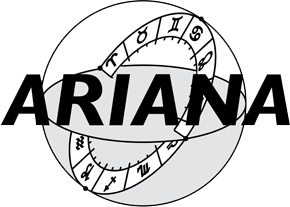Your Planets
Portraits of the Planets
Aspects between Planets
The planetary ages
The planetary families
Planets in Signs
The Planets in comics


See online : AstroAriana
 Post-Kepler
The planetary Aspects are now clearly identified as such by a minority of learned astrologers, and not as dependencies of the Ptolemaic zodiacal geometry, even if the latter retains some influence on their definition and on the admitted orbs. Theoretical debates about them will henceforth focus a lot about orbs and a tiny bit about ecliptic latitudes. To calculate the Aspects (...)
Post-Kepler
The planetary Aspects are now clearly identified as such by a minority of learned astrologers, and not as dependencies of the Ptolemaic zodiacal geometry, even if the latter retains some influence on their definition and on the admitted orbs. Theoretical debates about them will henceforth focus a lot about orbs and a tiny bit about ecliptic latitudes. To calculate the Aspects (...)
 The end of the 19th and the very first years of the 20th century are seeing two major innovations in the conception and perception of the Aspects and their orbs. We have to conceptual revival to the English astrologers Zadkiel and Alan Leo, and the graphic renovation, therefore perceptive, to the French astrologer Paul Choisnard. They did not know each other and most likely were unaware of (...)
The end of the 19th and the very first years of the 20th century are seeing two major innovations in the conception and perception of the Aspects and their orbs. We have to conceptual revival to the English astrologers Zadkiel and Alan Leo, and the graphic renovation, therefore perceptive, to the French astrologer Paul Choisnard. They did not know each other and most likely were unaware of (...)
 The long history of the conception of the Aspects and their orbs shows that in order to measure them, the vast majority of learned astrologers, who were usually also astronomers, practically always neglected the ecliptic latitudes of the planets. The absence of this coordinate in the calculation of the Aspects is a phenomenon all the more interesting and meaningful that these observers and (...)
The long history of the conception of the Aspects and their orbs shows that in order to measure them, the vast majority of learned astrologers, who were usually also astronomers, practically always neglected the ecliptic latitudes of the planets. The absence of this coordinate in the calculation of the Aspects is a phenomenon all the more interesting and meaningful that these observers and (...)
 Jean-Pierre Nicola and the first theory of Aspects
It is among other things in returning to the concerns and observations of early Mesopotamian astronomers-astrologers and in pondering Kepler’s failure that in the second half of the 20th century, the astrologer Jean-Pierre Nicola (1929) refounded the conception of the Aspects, unchanged since Ptolemy or even Kepler, which constituted a (...)
Jean-Pierre Nicola and the first theory of Aspects
It is among other things in returning to the concerns and observations of early Mesopotamian astronomers-astrologers and in pondering Kepler’s failure that in the second half of the 20th century, the astrologer Jean-Pierre Nicola (1929) refounded the conception of the Aspects, unchanged since Ptolemy or even Kepler, which constituted a (...)
 Annex
We observed that many 17th century astrologers considered the parallels of declination or contra-antiscia like Aspects. It is a mistake that has persisted and we will demonstrate it. And by the way, we will rehabilitate the perpendiculars of declinations or contra-antiscia, unjustly neglected by most ancient or contemporary astrologers.
The video below (6′ 53″) is a commented animation (...)
Annex
We observed that many 17th century astrologers considered the parallels of declination or contra-antiscia like Aspects. It is a mistake that has persisted and we will demonstrate it. And by the way, we will rehabilitate the perpendiculars of declinations or contra-antiscia, unjustly neglected by most ancient or contemporary astrologers.
The video below (6′ 53″) is a commented animation (...)
... | 210 | 240 | 270 | 300 | 330 | 360 | 390 | 420 | 450 | 480